|
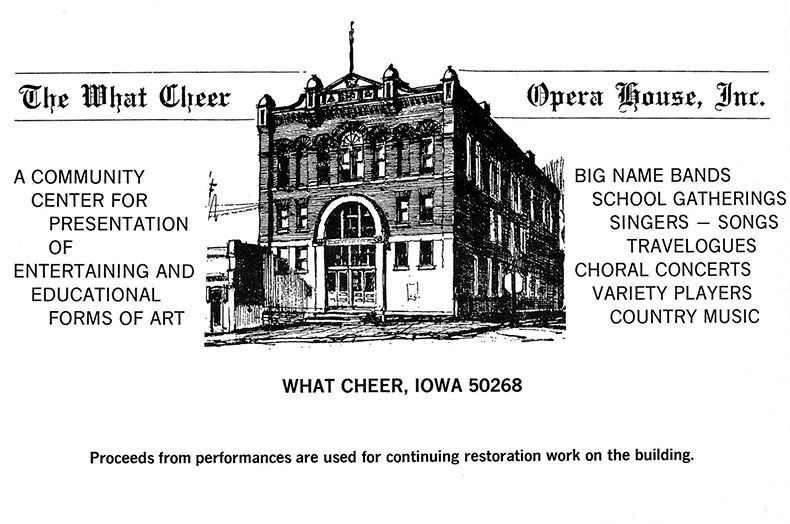
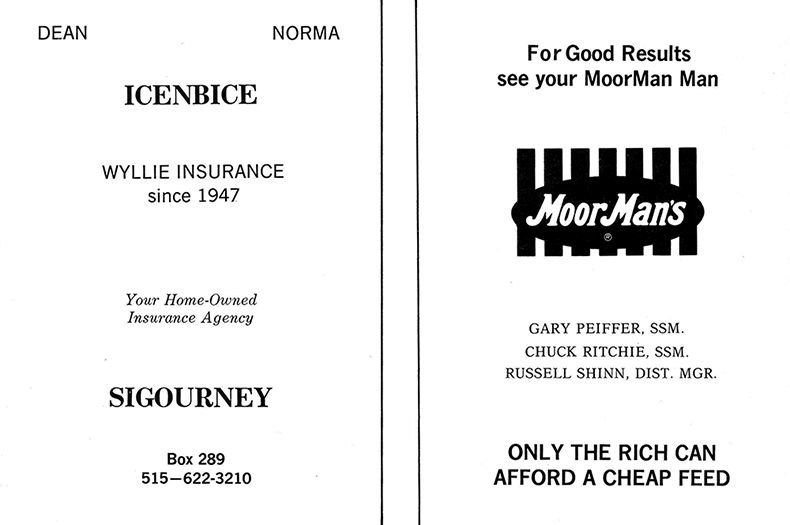
121
A glimpse into the past...
FIRES AND THE
KEOTA FIRE DEPARTMENT
May
8, 1877. On
Wednesday, May 2nd, J. W. Faris' livery stable and 11 horses were
burned; also harness, robes and four or five buggies.
May
12, 1877. The
city council was in session when Faris' fire broke out. They broke out
too and have met again to finish up. They have bought 10 ladders, a set
of hooks, a dozen rubber buckets, and have appointed Wm. Charlton Fire
Marshall.
May
19, 1877. The
citizens of Keota ask the council to procure a fire engine.
January
21, 1884.
Monday evening the Creamery Building burned. The fire was first seen by
the band boys who had just begun their practice in the upper room of
the main building. The boys gave the alarm and soon everyone appeared
ready to work with nothing except a few ladders, a couple of hooks and
fewer buckets. The buildings and machinery were entirely destroyed.
Every effort was made to save the surrounding buildings which they did
- some of the lowest roofs were covered with snow.
August
16, 1884.
Keota now has a fire engine. It was purchased from J. G. Chancellor,
who was here from the factory in Bloomington, Illinois. The Little
Giant, that is the name it will be known by, will throw a good sized
stream of water on top or over any building in Keota and is only
moderately hard work for the 16 men required to operate it. Now for a
fire company.
August
30, 1884.
Organization of a volunteer fire company was completed. Officers
elected are as follows: Chief, J. Palmer; First Foreman of the engine,
W. R. Charlton; second foreman of the engine, John Bailey; first
foreman on hose, H. C. Haney; second, C. Hinman; Secretary, W. F. Reed;
Treasurer, F. M. Smock.
September
10,
1887. Fire destroyed several store buildings in the neighborhood of the
present A.A. Hulse and Company store. The fire originated in Dr.
McFarlane's Drug Store, which stood where Dunn's Hardware now is, and
spread east to what was then Charles Capron's Barber Shop and Billiard
Hall, thence on east to the Charlton and Leinen Meat Market, consuming
all three. Miss Augusta Vollquarksen had a dressmaking establishment
upstairs in the McFarlane building, and Ed Mitchell and Harry Page had
rooms back of hers. Fletcher Graham, located across the street in the
Singmaster block, was awakened by the flames and gave the alarm. The
fire engine was unable to cope with the blaze due to inadequacy of the
water supply. Two vacant lots east of the meat market saved the rest of
the business district. Only Dr. McFarlane and Charlton and Leinen had
insurance.
February
20,
1891. Keota Town Council passes an Ordinance prohibiting the erection
of wooden buildings on Broadway between Davis street on the west and
Green street on the east. It is to provide against danger from fire.
April
26, 1895.
The Ramsey Elevator, now owned by Smith, Lewis and Co., lumbermen and
dealers in grain and seeds, caught fire Monday night and Keota was
lucky again to have the fire contained in one building. Everyone helped
to keep the pump going and thus save the town.
October
15, 1897.
Keota again narrowly escaped being wiped from the face of the earth.
The beautiful building which E. J. Ramsey built as a furniture store
was gutted by fire last Saturday and is almost a total ruin. The fire
was discovered shortly after noon in the upper story. The alarm was
sounded and soon an immense crowd gathered to do battle with the
flames. It was then that we realized how futile were our means of
fighting fire. The flames did get a foothold in the frame store owned
by H. Henkle but quick work with a few buckets of water checked them
and saved the row of buildings. Keota's life hung by two slender
threads during those brief two hours—the wind and the fact that the
walls of the building didn't collapse.
Several
months
later workmen were hired to rebuild the brick structure.
March
30, 1899.
Keota is the scene of another costly conflagration. Fire broke out in a
mysterious manner in the hay loft of George Bell's livery barn at about
9:45 and in a short time was entirely beyond control. The barn stood at
the end of a row of frame buildings so the moment the flames burst
forth they were also doomed. Had the wind been in any other direction
the magnificient Bryson Block would have been doomed.
May
18, 1899. The
600 feet of hose the town has bought places every building in Keota
under fire protection, which is the primary object of our waterworks.
June
20, 1899.
The first run with the new hose cart was made to the home of Mayor O.
B. Jones where there was a fire. Although several feet of water had
been pumped into the tank for experimental purposes, the firemen found
the fire easy to extinguish without city water.
August
10, 1899.
A bad blaze occurred when the Van Winkle Factory was fired by lightning.
May
15, 1902.
Keota fire fighting equipment has been improved by the purchase of
"controlling nozzles," two of which were purchased at a cost of $9
each. Men holding the nozzle can control the stream of water at will,
allowing it to flow full force or diminishing it as they see fit.
May
7, 1903. The
fire department was out in force Monday eve to see whether they had
hose enough to reach Wm. Charlton's residence, Mr. Charlton having
objected to paying the water tax thinking he had no fire protection.
The boys demonstrated they had enough and 150 feet to spare.
July
16, 1903.
The grain elevator belonging to Smith and Lewis on East Broadway, near
the railroad stock yards, was almost destroyed by fire. The fire
companies were on hand in short time and three streams of water were
turned on the building and adjacent structures so that progress of the
flames was checked before the entire building burned. The building
contained 6,000 to 10,000 bushels of grain, nearly all of which is a
total loss. The elevator was erected
122
A glimpse into the
past...
in
the early
'80's by J. L. Ramsey and was well built. Roland Neal has pictures of
the fire for 25 cents a card.
School
House Burns
January
2, 1908.
Monday afternoon, December 30, 1907, a few minutes after 1:00, B. L.
Sanders was passing the schoolhouse on his way down town when he
noticed smoke issuing from both the upper and lower windows of the
south annex. The fire department was quick to respond, but the fire had
gained a head start and nothing could be done but keep the fire down as
much as possible. In an hour the chimney was all that was left and they
pushed it over. Nothing was saved but an old organ and several desks.
The origin of the fire will probably never be known. $4,500 insurance
was carried, but the building was worth $7,500 and other contents worth
$300.
The
north wing
was built in 1874. In 1876 the central portion was added and in 1888
the south wing was built. The house had six rooms. Two have been
divided so at the time of the fire there were eight rooms. The town
hall, J. S. Stoutner's business room on W. Broadway and the present
band room have been engaged for class rooms.
January
9, 1908.
A new building will be ready as soon as possible. Schools opened Monday
on time. The high room is in the post office, Miss Kite is in rear of
the post office, Miss Wilson is in the town hall, Miss Fish is in the
band room, Misses McLaughlin and DeYoe in the Stoutner building.
January
9, 1908.
John Randolph recalls how the water mains are laid in Keota and the
lack of pressure at the school house fire was not due to any defect in
the system . A good thing for us all to remember is that our mains are
8, 6, and 4" respectively. 8" on Broadway, 6" on side streets and 4" in
the suburbs and the school was in that section.
October
8, 1908.
The brick and tile works belonging to S.K . Leacox was partially
consumed by fire shortly after the noon hour. The fire department
succeeded in saving the west and south drying sheds, but the office and
machinery are a complete loss. Mr. Leacox says he will rebuild at once
on the same site with a fireproof machinery room 28 x 60 which will
consume 100,000 brick and will install in it the very latest machinery
which will include a "gravity elevator."
October
19, 1911.
The town has a new steel tower for the fire bell located south of the
town hall near the railroad. It cost $100. There's just one thing
lacking. There is no systematic way of ringing the bell when there's a
fire.
February
23,
1922. There is considerable agitation at the present time about
improving our fire department by adding a good automobile truck to the
equipment, and paying for the same by popular subscription. Our fire
fighting equipment is about as modern as it was 10 or more years ago,
and while as a whole the department is very efficient, yet a little
modernization would be a mighty good insurance.
April
25, 1923.
The electric fire siren has been installed and wired to the telephone
office, from which it will be operated. One straight blast will be
blown at 12 noon each day except Sunday. The fire call, or varying
tone, will be used for fire only. Oren Palmer, Fire Chief.
February
3, 1927.
Another bad fire menanced the business district Sunday, when Charles
Coffman discovered smoke coming from the rear of the Wales Department
Store. The fire companies of Washington and Sigourney were called but
the Keota firemen found the seat of the blaze and the fire was under
control before help arrived. There was smoke damage and actual fire
damage to Wales stock was great. There was damage in the Keota Electric
store and the Hagist household goods were moved outside.
October
30, 1930.
The new Keota Community fire truck was delivered in Keota Saturday and
demonstrated at the Coffman place south of town where a brush pile was
soaked with gasoline and set afire. The pump was tested at the creek
and it pumped 300 gallons per minute at 120 lbs, pressure through a 1
1/8-inch nozzle for one hour; 150 gallons per minute at 200 lbs.
pressure through 1-inch nozzle for a half hour and 100 gallons per
minute at 250 lbs. pressure through 7/8-inch nozzle. The Council met at
special session and accepted the truck. The truck costs betwen $4,300
and $4,400. Honorary memberships among nearby farmers are $25.00. The
charge for fire calls to non-members will be $50 per hour.
March
30, 1936.
The work of removing the steel tower, fire bell, and fire siren from
the back of the old town hall lot to the new town hall, which is the
Hotel Keota, is in charge of Mike L. Greiner. The tower will be
re-erected just south of the hotel.
January
24, 1946.
The Model A. A. $4,000 fire truck is now better than 15 years old and
it is apparent that it is going to have to be replaced soon. It was
bought in 1930 when the Keota Farm Fires Service was organized by our
firemen. The town put up $1,000 and the farmers of the surrounding
community took $25 memberships to the extent of about $3,000. Edgar
Bandy hooked his wrecker onto the truck and towed it the two blocks to
a roof fire. Its chemical apparatus was used to put out the fire .
May
9, 1946. It
limped to a fire near Harper and put the fire out but wasn't able to
get home under its own power.
September
5,
1946. The new fire truck is here. The Keota Farm Fires Service was
first organized 16 years ago and it has worn out one truck during that
period. A drive was put on this spring and more than 300 memberships at
$25 each were secured to finance the purchase of the new truck, which
cost roughly $5,250 besides the cost of some 700 feet of hose and a few
small items of other expense. The old truck which is no longer fully
reliable will be kept at the rear of the fire hall for emergency use
only. The Town of Keota has agreed to man and maintain the new truck,
as it did the old one for the life of the truck. New members can join
the Farm Fires Service but memberships are considerably higher since
the end of the drive.
123
A glimpse into the
past...
|
The Minnesota Fire Equipment Company
of Lindstrom, Minnesota, put equipment onto the long wheel base Ford
chassis.
June 4, 1964. The storage building
owned by the Keota Lumber and Fuel Company was completely destroyed by
fire on Memorial Day 1964. Firemen from Keota, Wellman and Sigourney
battled the blaze for nearly three hours before bringing it under
control. Also damaged by the fire were the buildings of A. A. Hulse,
Farmers Savings Bank, Farm and Home Drug and an apartment in the vacant
building owned by Frank Dasher. A car owned by Mrs. Blanche Utt which
was parked behind the building was totally burned.
On that day a large part of the
business district of Keota hung in the balance for about an hour.
A fire January 6, 1967, completely
destroyed the service station in Keota owned by Gordon Pearson. Firemen
kept the fire from spreading to nearby buildings. No one was injured in
the fire but a car belonging to Bill Heisdorffer received smoke and
heat damage. The heat was so intense that pop bottles in the building
were melted. That takes temperature of 1500 degrees. The only things
saved were the cash register and records. Fire departments from Wellman
and Sigourney were called to assist. Estimated loss $30,000.
Keota Spray Service and Grimes
Decorating Service were completely demolished by disaster. Estimated
loss was about $250,000.
One of the most spectacular fires in
Keota's history occurred Thursday night, March 9, 1967, when the
offices and warehouse of the Keota Spray Service were completely
demolished. The Grimes Decorating Service, also housed in the building,
was destroyed. The Keota Locker plant brick building served as a fire
wall to stop the flames from consuming the Keota Lumber Company.
The Keota Spray Service lost over
5000 tons of feed as well as seed, chemicals and fertilizer.
The Grimes Decorating Service
serviced the surrounding counties with quality interior decorating
including paint, paper and drapery material.
The Keota VFW Auxiliary set up a food
stand in the VFW Post Home across the street from the fire scene and
served sandwiches and coffee to the firemen all night.
April 8, 1971. Fire seriously damaged
the Keota Junior-Senior High building Monday evening at 5:35. The blaze
started in the second floor hallway over the main entrance to the
building. This hallway is located over the stairwell and is used for
janitorial storage and also a locker area. Tom Gretter turned in the
alarm and when firemen arrived flames were shooting out the west
windows of the upper story. The fire spread north to the history
classroom and completely gutted the area. The Wellman Fire Department
was called and helped the Keota department extinguish the blaze.
Clean up started immediately Tuesday
morning and the insurance company hired professional cleaners. It is
hoped classes can resume next Monday morning.
|
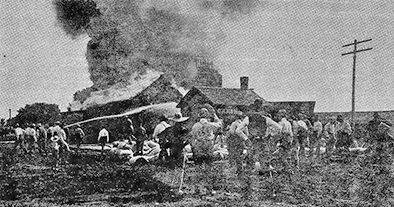
1895 — Fire at Keota Elevator |
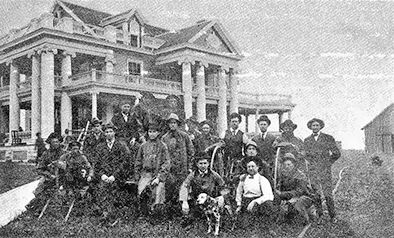
May 23, 1907
After fire at the Tom Singmaster home. Keota Fire
Department—Standing
with rain coat and fire hat in
center of picture is Roy
(Nibs) Schreckengast,
sitting below him, John Hamilton, his dog,
next right, Clark Nelson; standing by
hose, dark suit, Bert Helscher. |
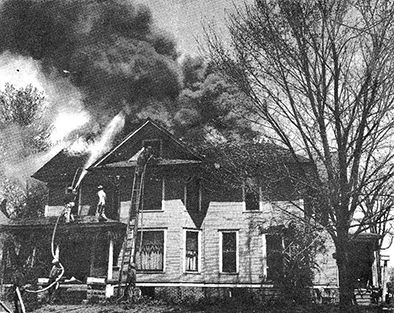
Mrs. Mae Page's house on fire. Mid 1930's. |
124
A glimpse into the
past...
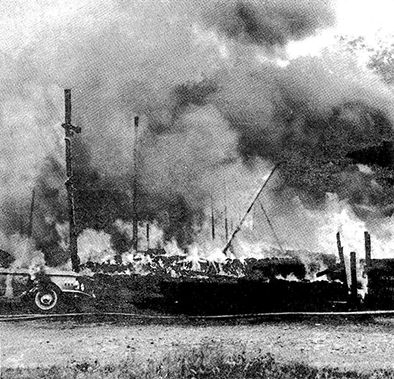
Memorial Day 1964.
Keota Lumber Company storage building. |
Keota's
firemen, along with members of five other departments, had the honor of
greeting the Fire Marshall of Denmark at the Prairie du Chien Airport.
The Keota
fire engine had the dubious distinction of being the only one to catch
fire during the rally. However, alert action of the local lads quickly
contained the slight conflagration (the exhaust pipe caught the running
board on fire). Not only did the Model A catch its running board on
fire, but the engine conked out on the last leg of the rally. Fire
Chief Jim Mound diagnosed rapidly the problem as being in the ignition
coil. He swiftly cooled the offending coil down with ice cubes, and
after a tow by the local sheriff (at 45 m.p.h.) they motored across the
finish line.
"Wide World
of Sports," a well-known Sunday afternoon TV program, was on hand
taking video tape of the rally. The news media was also in attendance.
The Los
Angeles Times put the story on the front page of its paper. The story
was syndicated and appeared in many of the larger papers over the
nation.
|
|
FIRE DEPARTMENT
GETS SURPLUS VEHICLE
May 25, 1972
Last Friday
the Keota Fire Department received a surplus Army 2 1/2-ton 6-wheel
drive truck through the U. S. Forestry Service. This truck, a 1952 GMC,
is to be used for the control of rural fires but can also be used at
town fires if necessary.
The local
department plans to install a 1,500 to 2,000-galIon water tank that can
be used to deliver water to the fire trucks at rural fires where water
is not available.
The unit
was obtained free of charge through the efforts of the Fire Department,
Keota Town Council and the Keokuk County Board of Supervisors. However
the Forestry Service retains title to the vehicle and the local Fire
Department must maintain it.
THE GREAT
FIRE TRUCK RACE
The Great
Fire Engine Race of America was held over the Memorial Day week-end,
1972, at Prairie du Chien, Wisconsin.
There were
45 fire trucks entered in the race, including Keota's 1930 Model A
Ford, from all over the United States.
|
 |
 |
125
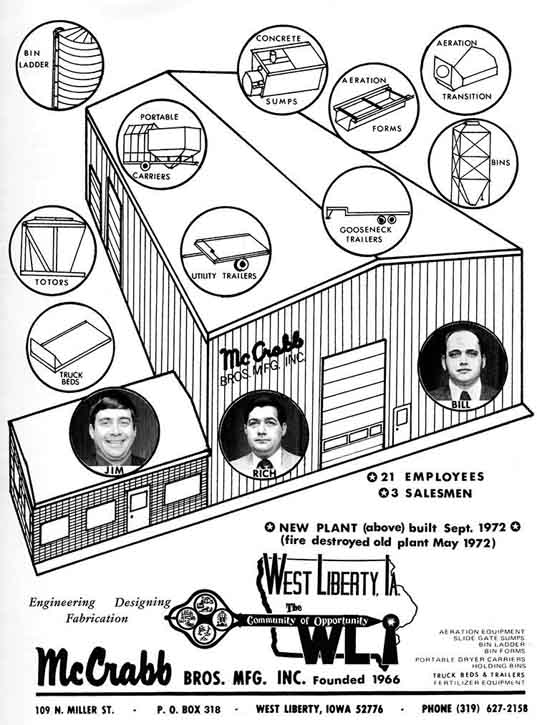
126
A glimpse into the
past...
STORMS,
DISASTER, CRIME, ETC. IN THE
KEOTA AREA
The Great
Tornado
One of the most
destructive tornadoes which ever passed through this part of the
country was the one occurring on the 23rd day of May, 1873. Certain
portions of Keokuk County were particularly unfortunate, and is often
referred to as the "Ascension Day Tornado."
About 2:00 p.m.
there came up a very heavy rain with a good deal of large hail and a
tornado started near Lancaster, tore a number of houses to pieces there
and came on towards Keota destroying a number of buildings and came on
to the east side of Clear Creek.
The tornado
raised, passed over Keota and traveled on about 10 miles east of Keota
where it struck the ground again and the destruction was terrible,
killing some 10 persons and injuring a great number.
In the Clear
Creek area the tornado not only demolished homes but took the lives of
Mrs. Peter Mersch and child and seriously injuring Mr. Mersch and two
other children. The little babe was killed in its father's arms.
Mrs. Nick
Engeldinger and babe were also killed in the tornado. Mrs. Mersch and
Mrs. Engeldinger were daughters of Mr. Wendel Horras. Many, many more
in the area were injured in the storm.
Many horses were
killed in the barns as well as many cattle, hogs and chickens. "Ducks
were sucked up out of the pond and their feathers picked off as clean
as they are picked for a barbeque, and they were dumped out 'dead
ducks' half a mile away."
Many now living
in the Keota area today are descendents of the two ladies killed in the
tornado. Mrs. Mersch was the grandmother of Mrs. Rosa Oswalt and
great-grandmother of Maurice Conrad of Keota.
Other descendents
of Mrs. Mersch living in the Keota area are Mrs. Leonard Bayliss and
Mr. Fremont Sieren and perhaps others. It was on the same farm where
the Sierens now live where the tornado struck with such great force
killing the great-grandmother of Mr. Sieren.
July 3, 1924.
Early Saturday morning, June 28th, a violent storm of wind, hail and
rain swept down on this community and worked havoc throughout the town
and country side. A strip of farm land from three to five miles wide
and extending from south of West Chester to beyond Webster was
devastated of all crops by the hail which came with terrible intensity
and unusual size. Some hail-stones were as large as a man's fist while
others were about the size of saucers. Thousands of window panes in
Keota and throughout the country area were broken. The wind that
preceded and accompanied the hail wrought much damage, tearing roofs
from buildings, destroying barns, tearing up trees by roots and
breaking branches from the trees. After the hail and winds came the
rains, from five to six inches in about two hours, flooding houses
through broken windows and damaged roofs. By six o'clock Saturday
morning creeks and rivers were out of banks. Many head of stock was
drowned. We are thankful that no lives were lost.
August 20, 1925.
A hail storm passed through this community Tuesday morning, August 18,
from northwest to southeast leaving in its wake ruined corn crops, dead
and crippled stock, some damaged buildings and thousands of broken
window panes, broken telephone and light wires. The worst area near
Keota was two miles east and four miles south and southwest with the
P.S. Peiffer farm as its center. Twelve and four teen-foot corn was
battered to the ground, the foliage and ears being pounded into the
ground with only two or three-foot stalks left standing. Trees were
stripped of leaves, pigs and chickens were killed galore, windows
broken and holes were punched in the roofs. Hail stones varied from
hickory nut size to the size of walnuts and they fell for about 15
minutes preceeded and followed by heavy rains. Some farmers carried
hail insurance this year but many did not.
The following
Sunday the main roads and by roads were crowded with auto tourists from
all directions, some as far as Des Moines, to see the hail damage.
Charles Auwaerter said about 1,500 people visited the Singmaster farm
that day.
June 10, 1926.
More dust storms swept through the cornfields to the north of Keota
Sunday and Monday. Most damage was in the fall-plowed fields. On Sunday
the fence dust filled the air and deposited over the countryside. Iowa
has probably never had a drier spring and early summer.
Tornado
Hits Nine Miles South of Keota, Saturday May 9, 1959.
A tornado struck
with vicious force about nine miles south of Keota Saturday evening
about 6:45. The tornado started near the Hopewell Church on highway 77
and made a destructive path north to Talleyrand.
The most serious
damage was done at the Kenny Henry farm, where the storm leveled all of
the buildings, leaving only a corn crib standing. In addition to the
eight-room home, and furniture, new machinery worth $20,000 was lost;
also approximately 40 pigs, six sows, one cow and 12 head of sheep.
Trees were
uprooted, barns and machinery demolished, roofs torn off, windmills
blown down, houses twisted on foundations on other farms in the
vicinity and strewn over a wide area by the severe storm.
The only person
injured was Mrs. Bill Bond when she was blown downstairs in her farm
home. She lived north of the Hopewell Church. She later died from her
injuries.
Hail the size of
golf balls, strong wind and rain hit the town of Keota and surrounding
area shortly after noon, Monday, March 22, 1966. There was severe
damage to roofs and hundreds of windows were reported broken.
CRIME
April 8, 1882.
Burglars visited Keota last Monday nite. They procured an outfit of
tools; braces, bits, chisels, sledge, etc., from Van Winkle's Carriage
Shop. They drilled the depot safe and blew the door entirely off it and
were rewarded with six dollars in dimes and nickels.
December 19,
1885. An attempt was made last week by H. N. Kinkade of Nebraska to
swindle the Keota Bank out
127
A glimpse into the
past...
of $11,000. He
came to buy horses from the Singmasters to the amount of $3,500. To pay
for the horses he presented two drafts drawn on the Ashland Bank in
Ashland, Nebraska—one for $10,500 and the other for $500. He wanted to
draw on these for the amount to pay for the horses and get letters of
credit on Washington Banks for the difference. It didn't seem a good
way to do business; so, a telegram was sent to the bank of Ashland,
Nebraska, which couldn't be delivered as there wasn't any bank by that
name. When Kinkade learned of the investigation, he took the first
train to Washington saying he would return in the morning, but he
didn't show up. The bank is to be congratulated for escaping from this
scheme.
September 17,
1897. Sheriff Teeter says lots of horses are being stolen. He gets
cards and telegrams daily. Horse owners should be on the alert against
thefts; a sure sign that horses are coming up in value.
November 5, 1897.
If a man who claims to be an agent for a patent hair restorer and
dandruff remover calls at your house with a satchel and a broad, bland
smile, sic the dog on him. If you haven't a dog hit him with a stove
lid. His story of virtues of his "wonderful" hair restorer is
refreshing, but the stuff isn't. It is only water and weak acid, and
its only virtue is that it acts as a sort of mild scalping knife.
November 26,
1897. A lot of our venturesome boys were arrested yesterday for
"hopping" the trains and were fined $3.50 apiece.
December 31,
1897. Someone had the audacity to steal a handsome evergreen tree from
C. Kirkpatrick's place a short distance west of town last week.
December 31,
1897. Some of the Talleyrand young people attended a dance at Harper
Friday nite and came home minus overcoats, lap robes, caps, and all
their other valuables that they hadn't in safe keeping.
January 7, 1898.
A thief entered the H. A. Millhouse carriage shop and carried away $30
worth of fine tools. On the same night the same robber forced a window
at the Van Winkle carriage works and took tools, about $10 in value.
A
FOUL MURDER
March 11, 1898.
Robbers Slaughter A Defenseless Old Man For His Money. The heart of
this community was stirred to its depths on Wednesday evening when the
report was circulated that George Shultzberger, a harmless old man
living just a mile and three quarters southeast of Keota, had been
found dead in his home, cruelly murdered. "Dutch George" as he was
known had been an eccentric character to this neighborhood for 25
years. He owned a farm of 40 acres and had lived in a small house upon
it, alone and unattended for many years. It had been supposed that he
had stored away considerable wealth. On Wednesday evening, Wm. Nelson
called at the house to see about some stock he was pasturing on
George's place, but he could see no signs of life about the place.
Suspicioning something was wrong he called his neighbor, E. Campbell,
and they with Charles Dayton forced an entrance to the house and
discovered the horrible evidence of murder. Someone had struck the old
man a fearful blow near the left ternple with a club or blunt
instrument, likely killing him almost instantly. It is thought the deed
was committed between the hours of 7 and 9 o'clock in the evening as he
was dressed in his daily garb. His room was torn up and a chest or box
in which he kept his valuables had been broken open.
George
Shultzberger was 73 years old. He had a brother in California and a
sister who lives near Wapello. The body was brought to Keota where an
inquest was held. The verdict was as follows: "The deceased came to his
death from a blow at the hands of a party or parties not known." His
sister, Mrs. Wiederrecht, took his body to Wapello where he is buried.
March 25, 1898. A
man living near Wellman recalls having borrowed $400 from "Dutch
George." The old man lifted a loose board from the floor, took out a
tin bucket, and from it counted out the money. The taking out of the
$400 made no apparent change in the size of the pile.
June 3, 1898.
Some miscreant picked the lock on Neal's photo display frame one night
and stole all the pictures it contained.
September 29,
1898. Saturday nite a couple of Keota's young men bought some oysters
and refused to pay for them. The Marshall was called in and the young
men resisted arrest. One of them was finally taken and lodged in the
cooler and the other got away without his buggy, started out of town by
"hand." Their trial is still pending.
August 17, 1905.
Monday morning Bower & Sanders discovered their store had been
burglarized and silks to the value of $400 taken. The robbers confined
themselves exclusively to silks. Their work was smooth. They abstracted
the valuable Taffetas and Peau de Soies from their coverings and
inserted cheap calicoes and such in their stead, replacing the bundles
on the shelves.
FARMERS
SAVINGS BANK ROBBED
A lone bandit
walked into the Farmers Savings Bank in Keota about 9:40 a.m. Monday,
August 1, 1966, pointed a gun at Wm. Henderson, assistant cashier,
handed him a paper bag and ordered him to fill the bag with the money
in the drawer. The bandit then fled across Broadway, through a vacant
lot to the railroad right-of-way where his car was parked, and fled out
of town with approximately $6,000.
Keokuk County
Sheriff J. "Bud" Wallerich filed a charge of robbery with aggravation
against Charles Robert Wallerich.
Wallerich, a
former area resident, had been serving a 25 year term on an Iowa charge
of robbery with aggravation and escape and had been paroled when he was
wounded in a gun battle at Kansas City. His parole was revoked and he
was returned to Fort Madison. He was later taken to the University
Hospitals in Iowa City for treatment of a gunshot wound when he escaped
July 28, 1966.
The Keota bank
was robbed and the robber escaped in a cream-colored Jeep which he had
apparently stolen in Iowa City. This vehicle was later found abandoned
in Chicago.
128
A glimpse into the
past...
|
A couple months after the Keota robbery, Wallerich
robbed a Minnesota bank, stole several cars and was involved in two
kidnappings.
After his indictment in Minnesota early in 1967 he
pleaded not guilty for reasons of insanity and had been confined to a
criminally insane ward of a Missouri prison.
He was never brought to trial for the Keota
robbery.
IOWA'S OLDEST COLUMNIST AND KEOTA HISTORIAN
Miss Kate
B. Glover of Keota, Iowa, lived to celebrate her 94th birthday December
6, 1964.
Kate was
born on a farm south of Washington, Iowa, December 6, 1870. In the
early 1870's the family moved to Keota where they purchased the house
in 1874 and this had always been her home.
A graduate
of the Keota High School in 1889, Kate later taught speech and drama in
the same school for 15 years. She was honored at the 1964 Alumni
Banquet as a 75-year graduate. She also coached dramatics at Ainsworth,
Cotter, Washington and Millersburg schools and directed plays at
Sigourney, Wyman and other area towns.
Kate's main
love was writing. Her column, "Bird Notes," appeared in The Keota Eagle
for 42 years and she was possibly the oldest regular columnist in the
state of Iowa according to a story published in the National Audubon
Magazine.
She also
had served as correspondent for seven southeast Iowa newspapers,
besides acting as society editor for The Keota Eagle.
Since she
had lived in the new town of Keota since its infancy this made her a
real source of information regarding the early history of the town.
Kate's love
of life, her smiling Irish eyes, and her determination to remain young
in heart was observed by a reporter when, in discussing her 94th
birthday, she said, "You don't stop having fun because you're growing
old, you grow old because you stop having fun!"
Kate passed
away November 7, 1965.
|
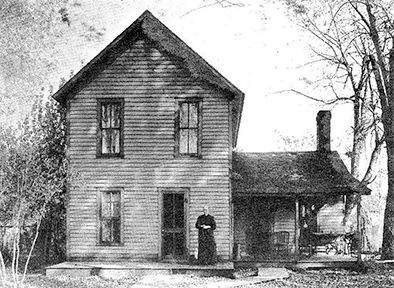
The house pictured here was built in the early 1870's. It was the
Glover home in 1875 when the family came to this community.
Mrs. J. E. Glover, pictured here, was the mother of Kate and
Frank Glover. This house stood until 1967 when it was razed. |
|
**********
August 15,
1935. Keota has broken into print in an odd way—Lois Montross, noted
fiction writer for a national magazine, including Saturday Evening
Post, chose Keota to be the home town of the college senior heroine of
a clever and well-written story in the September Pictorial Review. The
editor of The Eagle wrote Lois Montross and asked her choice as Keota
as the girl's hometown and she said she knew Harold M. Page when both
were students at the University of Illinois before the war.
**********
September
14, 1967. John Powell was given an appreciation dinner on September 11
by the Lion's Club for his many years as public official in Keota as
mayor, member of town council, trustee of the Keota cemetery. His
typewritten records list the owners of about 2000 lots and the record
of graves on these lots. He has been chairman of the committee
supporting the Red Cross and Salvation Army. He is a member of the
Methodist Church and a resident of Maplewood Manor. Mr. Powell is 91
years of age.
**********
July 4,
1968. Joe Geil tore down the old building in back of his house and
reports that it was the first home (one-room) built in the town of
Keota. It had plastered walls, a chimney, and was built on a limestone
foundation.
|
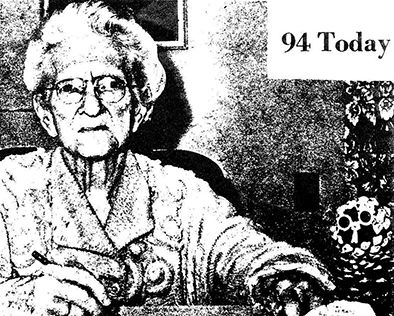 |
129
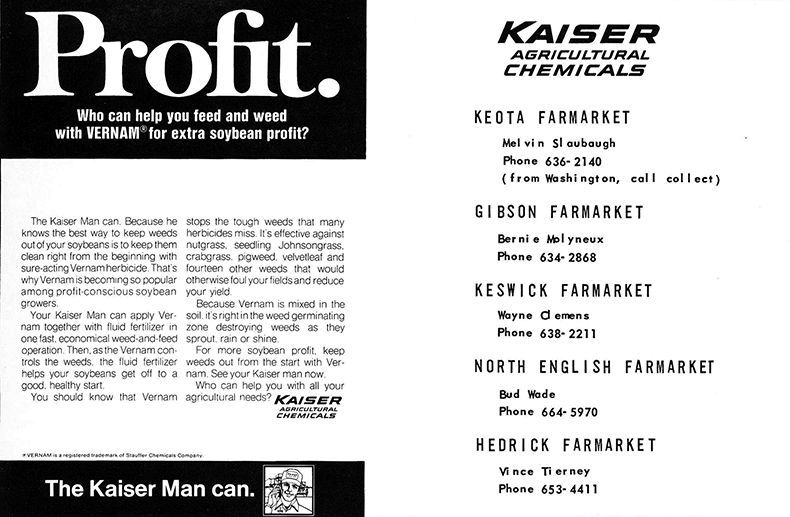
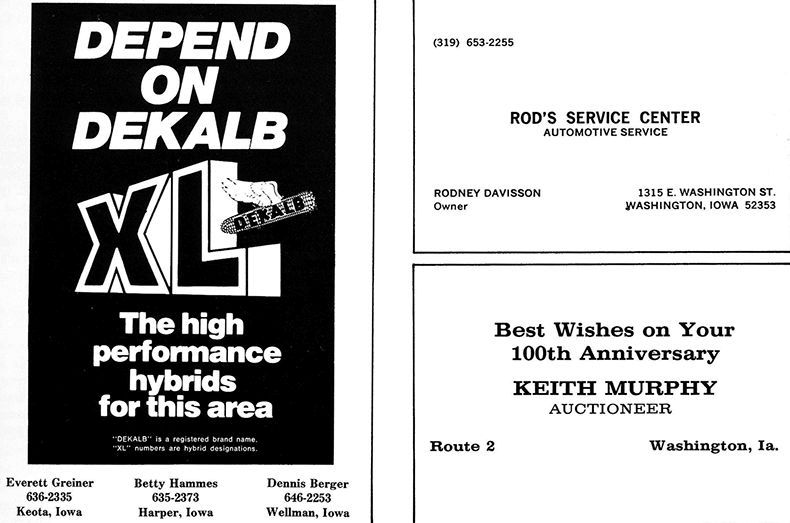
130
|